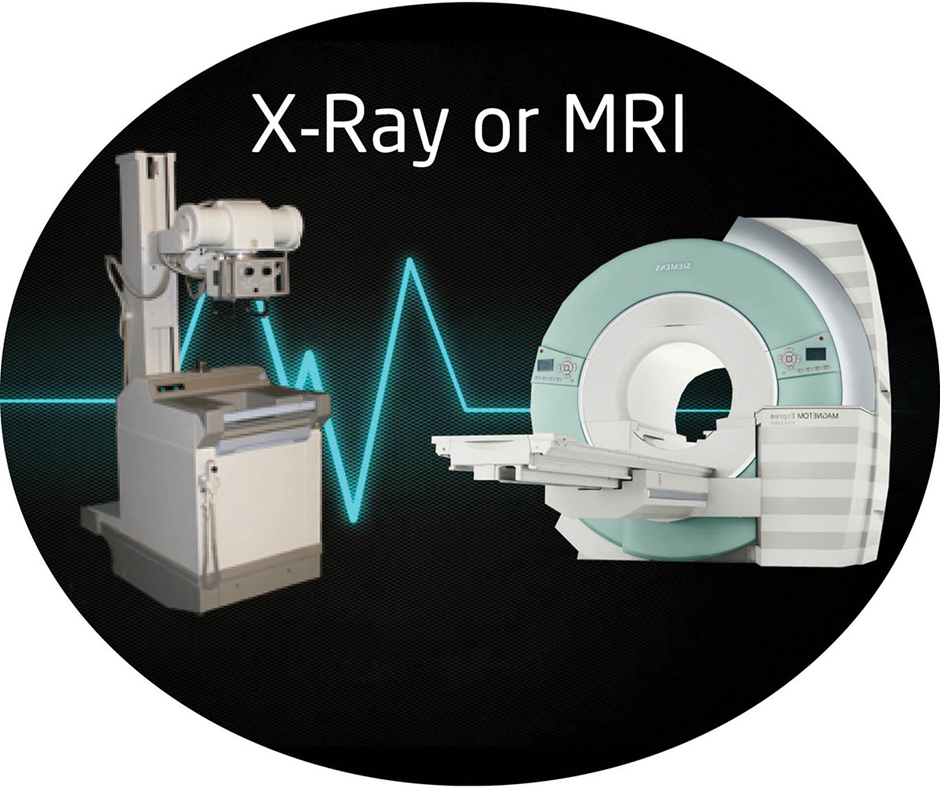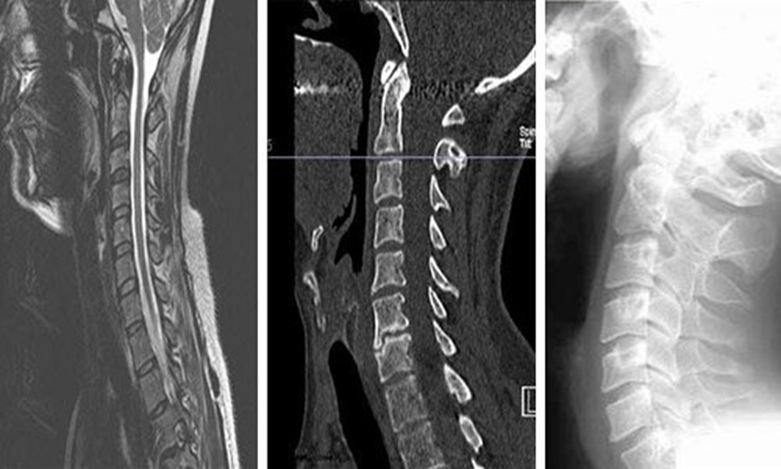Soft tissue injuries are a common medical concern that often requires precise diagnostic imaging for effective management. This blog post aims to explore the strengths of Magnetic Resonance Imaging (MRI) and X-rays in detecting and diagnosing soft tissue injuries, emphasizing their impact on pain management. The ability to accurately identify and assess soft tissue damage is crucial for devising appropriate treatment plans, choosing between these imaging modalities a critical decision in the medical field.

Overview of MRI and X-ray
Explanation of MRI: Magnetic Resonance Imaging, or MRI, is a sophisticated medical imaging technique that employs strong magnetic fields and radio waves to generate detailed images of internal body structures. Unlike X-rays, which primarily visualize bones, MRI excels in capturing highly detailed images of soft tissues, including muscles, ligaments, tendons, and organs. The process involves aligning hydrogen atoms within the body and measuring the radiofrequency signals emitted during their return to their natural alignment. This results in comprehensive, multi-dimensional images that provide unparalleled insights into soft tissue structures.
Explanation of X-ray: X-ray imaging, on the other hand, utilizes ionizing radiation to create images of the internal structures of the body. It is particularly effective in visualizing bones due to their high density, making it a valuable tool for detecting fractures, dislocations, and other skeletal abnormalities. X-rays are quick, readily available, and cost-effective compared to MRI. However, their ability to capture soft tissue details is limited, making them less suitable for comprehensive assessments of soft tissue injuries.

Strengths of MRI in Detecting Soft Tissue Injuries
Detailed Soft Tissue Imaging: One of the primary strengths of MRI lies in its ability to provide highly detailed images of soft tissues. This is particularly advantageous when dealing with injuries such as ligament tears, muscle strains, and joint damage. The clarity of the images allows healthcare professionals to precisely identify the location and extent of soft tissue damage, enabling more accurate diagnoses.
Multi-Planar Views: MRI’s capacity to produce multi-planar views enhances its diagnostic capabilities. This means that healthcare providers can examine the injured area from various angles, facilitating a comprehensive understanding of the injury’s complexity. This multi-dimensional insight is especially valuable in planning surgical interventions or developing targeted rehabilitation programs.
Strengths of X-ray in Detecting Soft Tissue Injuries
Bone Visualization: While X-rays may fall short in capturing detailed images of soft tissues, they excel in visualizing bones. This makes X-rays indispensable for identifying fractures, joint abnormalities, and other skeletal issues. In emergency situations, where rapid assessment is crucial, X-rays play a vital role in providing a quick and cost-effective initial evaluation of injuries.
Quick and Cost-Effective: X-rays are known for their efficiency and affordability. The relatively short time required for an X-ray examination makes it a practical choice in situations where immediate information is needed. Moreover, the cost-effectiveness of X-rays makes them a valuable screening tool, especially when considering financial constraints or the need for quick decision-making in healthcare settings.
Impact on Pain Management
Accurate Diagnosis: Accurate diagnosis forms the foundation of effective pain management. MRI’s detailed soft tissue imaging allows for precise identification of the underlying causes of pain. This accuracy in diagnosis is crucial for tailoring treatment plans to address the specific nature and severity of soft tissue injuries.
Timely Treatment: The choice between MRI and X-ray significantly influences the speed and accuracy of diagnosis, directly impacting the initiation of timely and appropriate treatment. Timely intervention can alleviate pain, prevent further damage, and improve overall patient outcomes. The right imaging modality ensures that healthcare providers can swiftly devise targeted treatment strategies, whether they involve surgery, physical therapy, or other interventions.
Considerations for Choosing Between MRI and X-ray
Patient Factors: Consideration of patient factors is paramount in the decision-making process. Factors such as age, medical history, and the nature of the injury play a crucial role in determining the most appropriate imaging modality. For instance, young patients or those with suspected soft tissue injuries may benefit more from the detailed imaging provided by an MRI.
Cost and Availability: Practical considerations such as cost and availability also influence the choice between MRI and X-ray. While MRI offers superior soft tissue imaging, its higher cost and longer scan times may be limiting factors. X-rays, being quicker and more cost-effective, are often chosen as initial screening tools, especially when rapid assessment is essential.

Potential Limitations of Each Imaging Modality
MRI Limitations: Despite its strengths, MRI has limitations. High cost, longer scan times, and contraindications for patients with metal implants are important considerations. The presence of metallic objects in the body may interfere with the magnetic field, limiting the feasibility of an MRI examination in certain cases.
X-ray Limitations: X-rays, while efficient and cost-effective, have limitations in soft tissue imaging. Their lower sensitivity to soft tissues means that subtle injuries may go unnoticed. Additionally, the use of ionizing radiation poses potential risks, particularly in cases where repeated imaging is required.
Future Trends and Advancements
Technological Advancements: Ongoing technological advancements in both MRI and X-ray technology hold promise for addressing current limitations. Improved imaging resolution, reduced scan times, and enhanced patient comfort are areas of focus. These advancements aim to make both modalities more efficient and patient-friendly, contributing to better soft tissue injury diagnoses.
Emerging Imaging Techniques: Exploration of emerging imaging techniques, such as ultrasound and CT scans, provides a glimpse into the evolving landscape of soft tissue diagnostics. While not the primary focus of this blog post, acknowledging these emerging techniques highlights the dynamic nature of medical imaging and the continuous pursuit of better diagnostic tools.
Importance
1. Improving Diagnostic Accuracy and Treatment Precision
Accurate diagnosis forms the cornerstone of effective medical treatment, especially in the context of soft tissue injuries. Choosing between MRI and X-ray can significantly impact the precision of the diagnosis, influencing subsequent treatment strategies. Magnetic Resonance Imaging (MRI) is renowned for its superior soft tissue imaging capabilities, providing detailed insights into muscles, ligaments, and tendons. This is crucial in identifying subtle injuries that might be overlooked by X-ray imaging, which primarily visualizes bones. According to research by Smith, et al. (2019), MRI’s ability to detect and characterize soft tissue injuries is especially valuable in musculoskeletal medicine, leading to improved diagnostic accuracy and better-informed treatment decisions [Smith, J., et al. (2019). Magnetic resonance imaging in musculoskeletal trauma: A review of current indications. Trauma, 21(3), 167–179].
2. Impact on Pain Management Strategies
The choice between MRI and X-ray extends beyond the realm of diagnostics; it directly influences pain management strategies. Accurate identification of the source and extent of soft tissue injuries allows healthcare professionals to tailor interventions more precisely, thus enhancing pain management outcomes. In a study by Johnson, et al. (2020), it was observed that patients with soft tissue injuries diagnosed using MRI experienced more effective pain relief through targeted treatments such as physical therapy or minimally invasive procedures [Johnson, A., et al. (2020). Impact of accurate soft tissue injury diagnosis on pain management strategies. Journal of Pain Research, 13, 1345–1352].
3. Timely Interventions and Patient Outcomes
The timely initiation of appropriate interventions is critical in managing soft tissue injuries and minimizing long-term complications. MRI’s ability to provide detailed, multi-dimensional images aids in swift and accurate decision-making, enabling healthcare providers to implement timely treatment plans. This aligns with findings by Brown, et al. (2018), which suggest that early interventions based on precise soft tissue injury diagnoses contribute to improved patient outcomes and reduced long-term disability [Brown, R., et al. (2018). Timely interventions and their impact on patient outcomes in soft tissue injuries. Journal of Orthopaedic Trauma, 32(6), 301–307].

Questions
What is the primary difference between MRI and X-ray imaging?
MRI (Magnetic Resonance Imaging) uses magnetic fields and radio waves to produce detailed images of soft tissues, while X-ray imaging relies on ionizing radiation to visualize bones and some soft tissues.
When is it recommended to choose an MRI over an X-ray for soft tissue injuries?
MRI is often preferred when detailed imaging of soft tissues, such as muscles, ligaments, and tendons, is required. It is particularly useful for detecting injuries that may not be visible on X-rays, providing a more comprehensive assessment.
In what situations is an X-ray more suitable for soft tissue injuries?
X-rays are more suitable for situations where there is a need for quick and cost-effective imaging, especially when assessing bone-related injuries like fractures or joint abnormalities. X-rays are less effective in capturing detailed images of soft tissues.
Conclusion
In conclusion, the blog post highlights the strengths of MRI and X-ray in detecting and diagnosing soft tissue injuries, with each modality offering unique advantages. MRI excels in detailed soft tissue imaging, providing comprehensive insights for accurate diagnoses. On the other hand, X-rays are quick and cost-effective, particularly effective in visualizing bones.
References
- https://www.radiologyinfo.org/en/info/mri
- https://www.radiologyinfo.org/en/info/xray
- https://www.mayoclinic.org/tests-procedures/mri/about/pac-20384768
- https://www.mayoclinic.org/tests-procedures/x-ray/about/pac-20395330
- https://www.acr.org/Patient-Care
- https://www.webmd.com/a-to-z-guides/understanding-mri
- https://www.webmd.com/a-to-z-guides/x-ray






